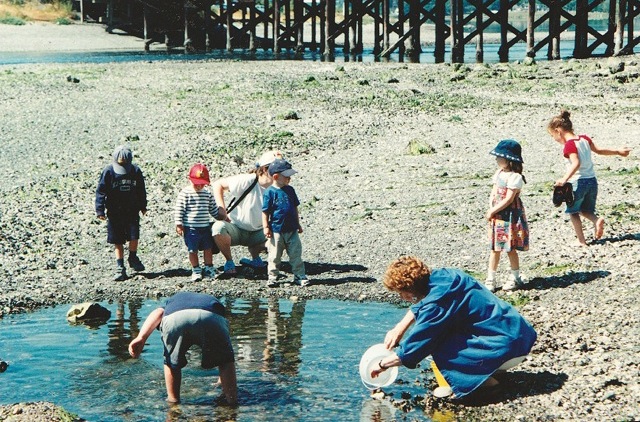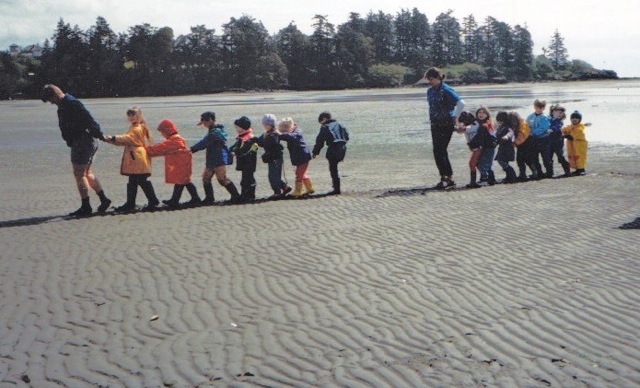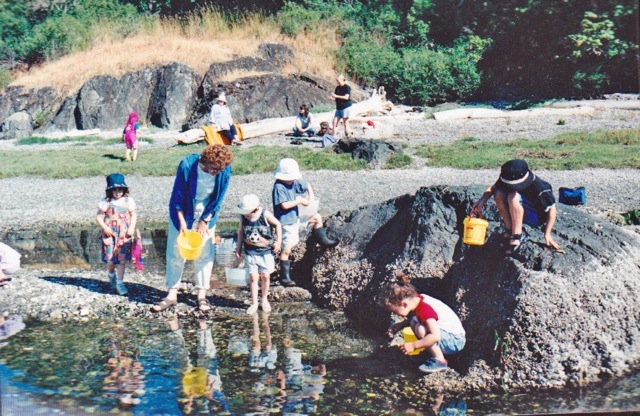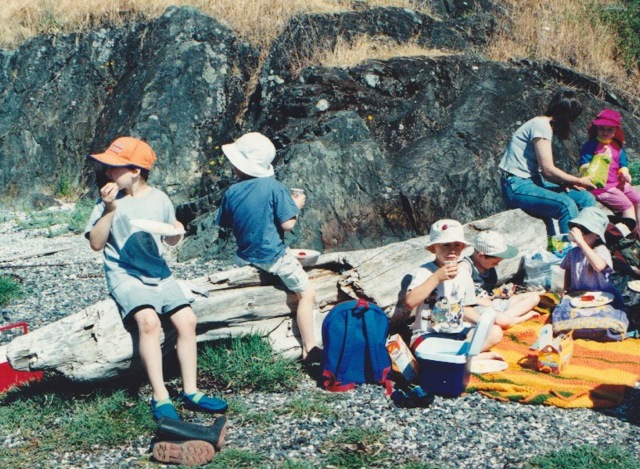Pre-trip planning:
1. Check the tide charts before setting a date. For the safety of the children it is important to choose a day and time with a very low tide. Tidepools are rocky pools on the shore which are filled with seawater and many of them only occur at low tides.
Tides listed in minus feet are the lowest. When looking at a summer tide chart, remember to check to see if it is adjusted for Daylight Savings Time.
2. Teach tide pool etiquette. With so many children tramping in the pool and touching the animal and plant life, the tide pool can be loved to death! Young children won’t remember all of the following rules but if you introduce the concepts with puppet play and role-playing they will be more aware of the needs of the living organisms.
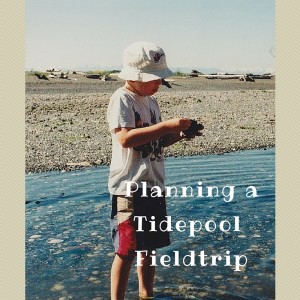
- Wash sunscreen off your hands before you put your hands in the tidepools
- Do not try to pry animals off of rocks as this will injure or kill them
- Walk carefully and watch where you step on the rocks or the animals will get crushed
- Animals often use seaweed and rocks as protection from predators and the hot sun. Do not turn over rocks to see what is underneath
- If children put samples in a bucket to observe them more closely, teach children to cover their samples in the buckets with sea water and to return the animals to the tide pool after 5 or 10 minutes. The water temperature rises quickly in a bucket and the animals may die.
- Remember: LEAVE ONLY FOOTPRINTS / TAKE ONLY PICTURES
3. Be aware of tide pool safety. For younger children choose shallow tide pools that are well away from any cliffs, fast moving water or wave action. You may need a local park ranger to help you find a good location.
Rocks and algae can be very slippery. Have children wear shoes or boots with good traction. It is a good idea to start your visit to the tide pools at least one hour before low tide and keep an eye on rising tides, depending on where you live.
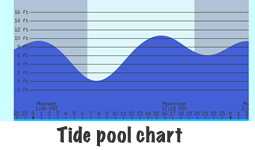
4. Arrange lots of parent helpers to closely supervise children near water. Assign a parent a specific group of kids. I usually combine a year end picnic with the tide pool field trip and that way many parents attended and were responsible to watch their own child.
5. Informing parents:
- Send a letter home early with a list of things to pack for their child for field trip day.
- If you make the field trip an end of the year picnic also, inform the parents with details.
- Be aware that often parents bring younger siblings. If all parents are coming, remind them that they are responsible for their younger children’s safety (you will still be expected to take full responsibility for watching your students).
- If fewer parents are coming, give them a list of the children they are responsible for driving and watching during the field trip. Most school’s have their own permission forms for field trips, policies and rules concerning driver insurance, booster seats, etc. if parents are driving other people’s children.
- Ask parents to send:
- a jacket and long pants, depending on the weather
- a change of clothes and shoes
- sunscreen and hats
- water for each child
- old tennis or water shoes with good treads to wear in the water
- food and drinks
6. Check with local parks before taking large groups to a park beach. They may have their own field trips booked. If you take younger children to tide pools which are not in a park, check for the location of the nearest bathroom.
In the image below, the park staff took charge of all activities and teaching. Rather than specific tidepools, the children explored the area where the beach and the water met, full of crabs and other critters.
7. Arrange for one parent to visit the site early. Sometimes people visiting the site the night before may leave broken bottles or other garbage you do not want the children to touch. The parent checks over the site and removes anything dangerous.
8. Gather your materials for the trip:
- magnifying glasses and a small bucket for each child
- one large bucket for sharing interesting samples and teaching about specific organisms
- wipes for washing hands before the children eat
- a tide pool reference book
- a container and water for children to wash any sunscreen off their hands as even touching the water in a tide pool with sunscreen on their hands can create conditions that could kill the vulnerable creatures in the tidepools
Special note about park field trips…
Some of the richest tidal areas are in public ocean parks. Check their rules before taking children.
They often allow people to look in tide pools only and not to touch the marine life. Any tide pool life, shells, plants, flowers, kelp, etc. are not to be removed, collected or disturbed. In the image below, the pools were quite a distance from the main beach during low tide and the children were able to touch and study many tidepool animals.
The Day of the Field Trip
- Expect to spend about 2 hours to get organized, observe the tide pool creatures and have a picnic. Add extra time for driving to and from the tide pool
- Review safety rules for children and for respecting tide pool organisms before you leave for your trip.
- Keep the trip casual for young children. Their job is to explore, discover, ask questions and learn. Gently remind them to check where they found an animal and to put it back in the same place after a short period of observation. Focus on the children, not the parents.
I have taken children on this type of field trip many times and they are mesmerized by the life in a tide pool. Plan one hour for children to observe the tidepools and ask some parents to arrange food on blankets or towels during this time. Children eat and drink and then go home or return to the school depending on your schedule. Usually parents bring enough of one item of food for each child in the class (finger food is easiest).
After the Field Trip…
Display a collection of shells and dried, dead tide pool creatures and plants in the science center before and after the field trip. Never bring live samples back to the classroom as they will die, smell and have to be thrown out. I collected a few every items every year and bought some from shops as well. The collection grows quickly.
Teach about one organism a day, read literature about tide pools and make tide pool booklets. For example the children can trace a dried starfish, color it and try to print the word.
